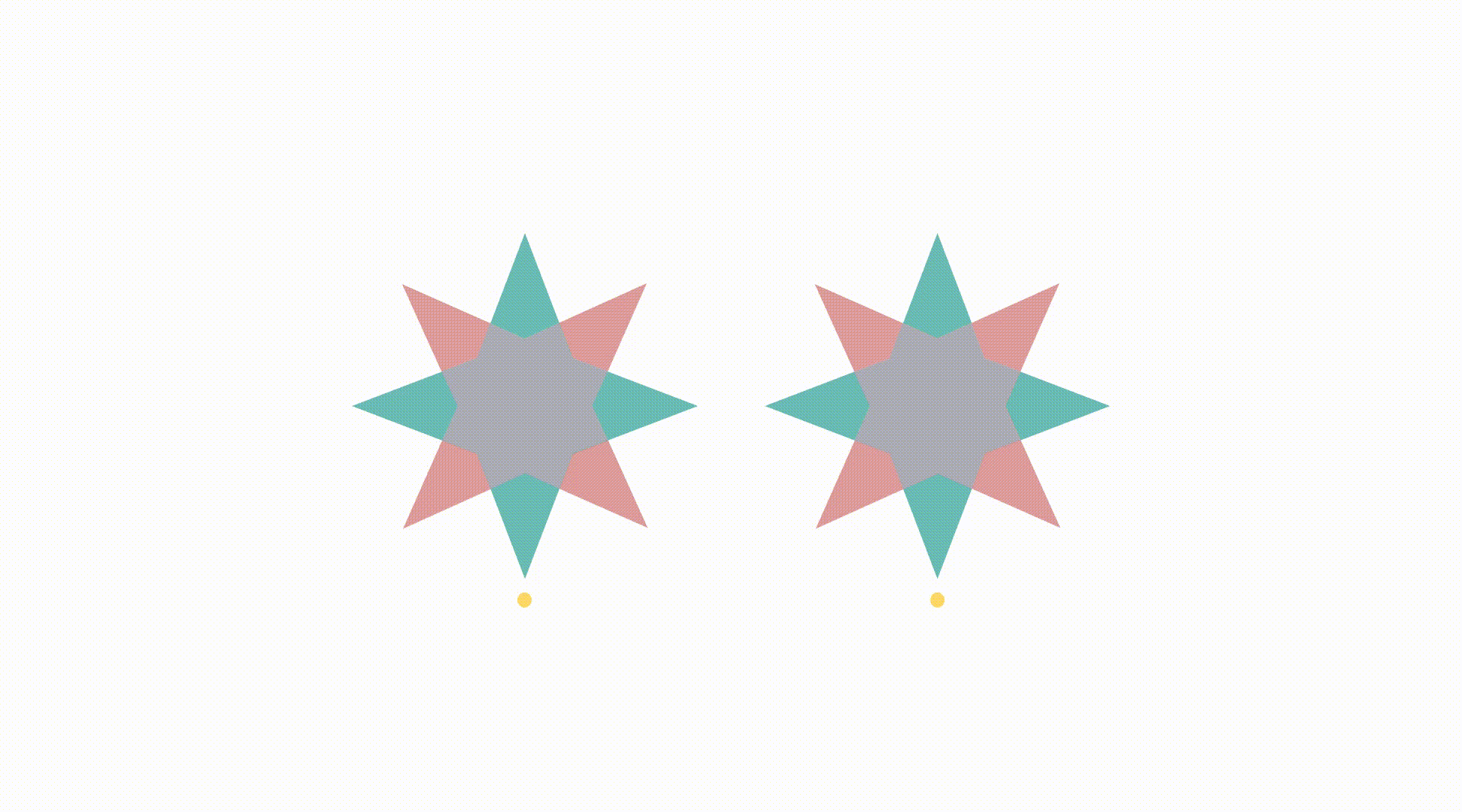9.35 Illusion Laboratory
Spring 2020 Vision Lab
Can an afterimage be filled in from stereoscopic cues?
Fixating on a point such that the cones of the retina are continually exposed to a given color induces adaptation - the sensitivity of the cones
to the color is reduced. When the observer is then shown a white screen, an afterimage is perceived in the complementary color. The paper Filling-in afterimage colors between the lines
(van Lier R, Vergeer M, Anstis S.) demonstrates that the color of the afterimage depends on contours shown on the blank screen. The afterimage of two different colors will be perceived strongly as
one color if a contour is drawn around the edges of that color. Moreover, the regions within the contour that were not adapted to color are filled in, creating a percept of a uniform color fill of the contour.
Link to original illusion.
I wanted to explore whether the same effect could be elicited by contours created by stereoscopic effects. My illusion uses the same star-like shapes as the original illusion, with the same colors.
As before, two identical images are presented side by side, however, rather than fixating on a point between them, the observer diverges or converges their eyes to create a single image formed
from the combination of the two adjacent images - a stereogram. You should see one sharp image in the center with two peripheral images on either side. Once the new focus plane is acquired, the observer should fixate on the yellow dot. The image will then switch to the same shape
in white on a textured background. The two different star shapes, now in white, will alternate in moving stereoscopically towards the observer. This is done by shifting the corresponding shape on the right slightly to one side.
The textured background serves only to provide background cues for the stereoscopic effect. Both white star shapes are presented simultaneously, with the only difference being the perceived plane on which
they lie. This allows us to determine whether stereoscopic cues produce the same effect as contour cues in the original illusion.
Is the percept of the afterimage altered depending on which of the two star shapes is at the forefront? Does the afterimage change as the shapes move towards and away from the observer?
Several loops of the video should be viewed for the strongest afterimage effect, just as in the original.
If you are having difficulty forming the stereogram, try zooming out on the GIF - the smaller the shapes, the smaller the divergence/convergence of your eyes should be.
I have provided a GIF for those who converge and those who diverge. The only difference is the direction in which the shapes are shifted, which alters whether the shapes move in or out of the plane.
The convention for viewing stereograms tends to be for shapes to move towards you, out of the plane.

Converge:

Citations:
van Lier R, Vergeer M, Anstis S. Filling-in afterimage colors between the lines. Current Biology : CB. 2009 Apr;19(8):R323-4. DOI: 10.1016/j.cub.2009.03.010.

CC BY-NC. | Design by TEMPLATED.